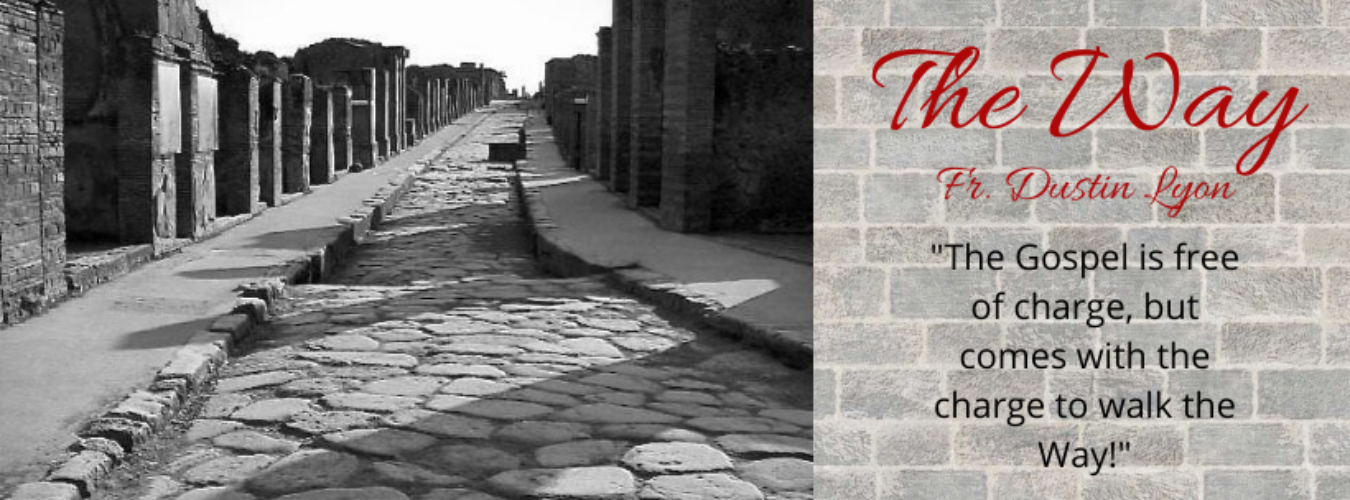The Death of the Theotokos is a major feast in the Church, but why does the icon of the feast depict her as a baby in a burial shroud?
THE DORMITION IS A MAJOR FEAST
There are only four feasts that have extended fasts in preparation for them.
The Feast of the Apostles has a period of fasting that is variable, depending on the date of Pascha.
The Feast of the Nativity is preceded by a 40 day fast – not counting Thanksgiving, of course.
We also have the Feast of Feasts, Pascha, the celebration of the Resurrection of Christ. Not only do we fast during Holy Week, but we have the 40 days of Lent and a few preparatory weeks.
The fourth feast is the one now before us: the Feast of the Dormition of the Theotokos, which is preceded by a two-week fast at the beginning of August.
Sometimes this feast is known as the Assumption in English. If we translate the Greek, the name of the feast is literally: The Falling Asleep of the One Who Bore God.
On the surface, it seems we are merely celebrating the death of Mary, the mother of Jesus Christ.
But I think there’s more going on here. I believe if we look closely at the icon of the feast, we’ll find that this feast is telling us something about how to live. Or, to put it in Christian lingo, how to live by dying in Christ.
THE STRANGENESS OF THE DORMITION ICON
Let’s start by taking a close look at what’s happening in the icon.
In the center, we have the Mother of God, deceased, and laid out on a funeral bier, her arms crossed over her chest.
Surrounding her are Christ’s Disciples who have gathered from around the world to pay their respects. Peter stands at her head censing her body, as Orthodox priests still do today at funerals.
In addition to 11 of the Disciples, we have St. Paul, apostle to the Gentiles, as well as many later saints of the Church including: Timothy, Hierotheus and Dionysius the Areopagite.
Often, St. John of Damascus and St. Cosmas the Poet are also depicted in the icon, both of whom have hymns featured in this feast.
But our eye is typically drawn to the center of the icon. There we find Christ. Around him is the mandorla, made up of the heavenly hosts.
And in his arms is what strikes us as a strange sight. It’s a baby – not just any baby, but the Mother of God, the Theotokos!
This is one of those rare instances where she’s depicted twice in the same scene – once as a deceased adult and again as a baby in the arms of her Son!
But why? What’s going on?
As strange as that may seem, it gets stranger if we take a closer look.
Notice the baby’s clothes. It’s not a nice baby gown…it’s burial shrouds! We expect burial shrouds in this icon – it is the death of the Theotokos, after all – but they aren’t on the deceased body.
What’s going here?
BURIAL CLOTHES ON THE BABY JESUS
The more I think about it, we’ve encountered people in burial shrouds in other icons. I wonder if they can shed some light on the situation here?
The first icon we encounter in the course of the church year – which begins in September – is the Nativity Icon.
Here we have the birth of our Lord.
In this icon, we have a slightly different scene than what we’re used to in the Western world. Here the birth of Christ is depicted in a cave.
As we expect, we see the manger animals, Joseph, the angels, the shepherds, and the magi.
In the center of the icon, we find the Mother of God, just having given birth to her son. She lies on a rock, and in the manger lays her Son. But there’s something odd here. He too is not in a baby gown, but rather he’s in burial clothes.
This juxtaposition of birth and death is strange.
But it’s message is very clear: the one who was born on Christmas night is the one who was born to die on the Cross. This was the plan from the very beginning. For God so loved the world that he gave his only-begotten Son…
But there’s more to this message!
Stay tuned for part 2!
P.S. Consider Exploring the Death of Mary with the Orthodox Church!
I now invite you to enter deeper into the mystery of Christ with the Orthodox Church!
St. Elias Services
Saturdays, 5 pm (at St. John’s Parish House, 1458 Locust St, Dubuque, IA)
Sundays, 9:30 am (at Hillcrest Chapel, 2001 Asbury Rd, Dubuque, IA)
Or find your nearest Orthodox Church by clicking here

